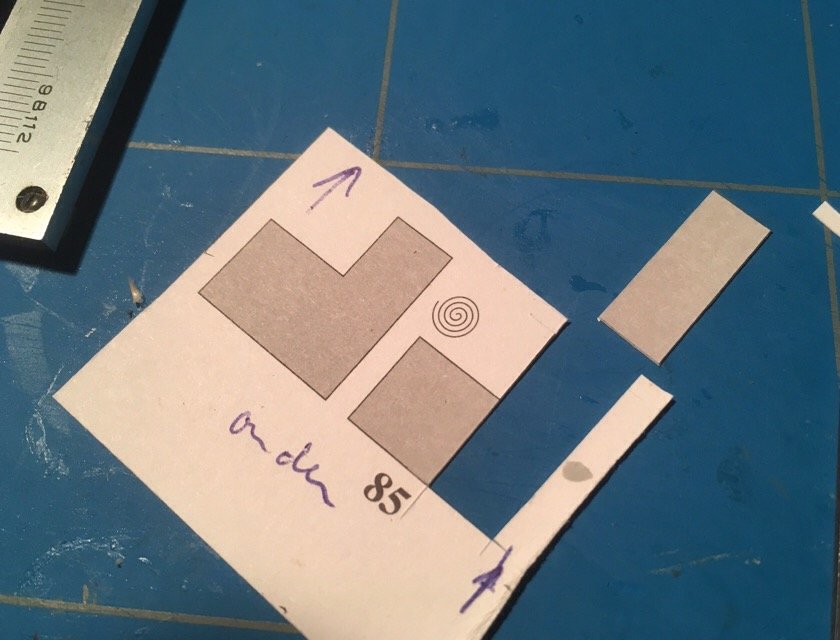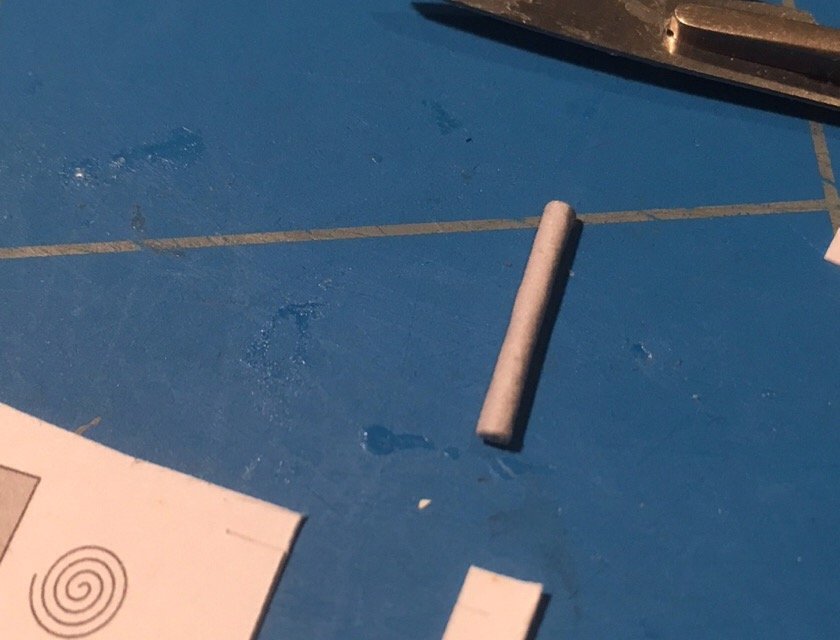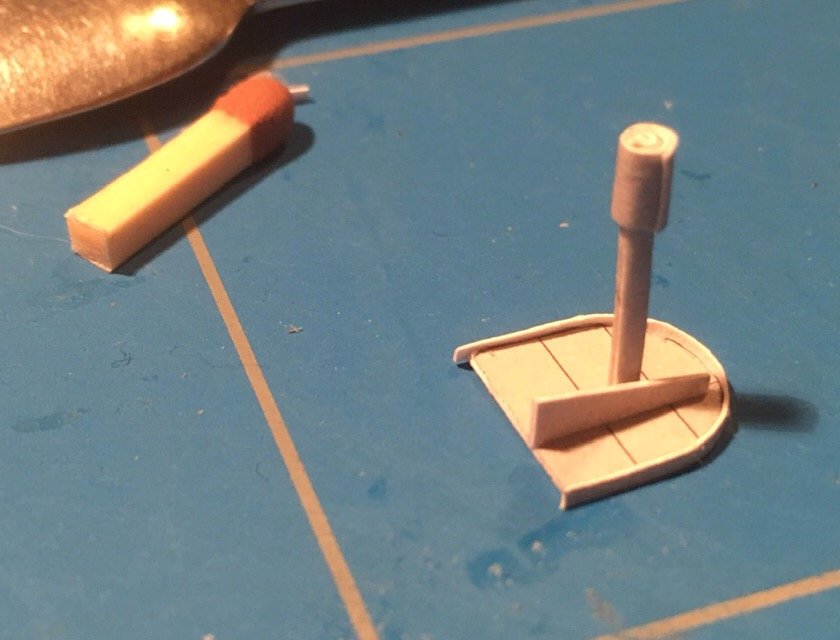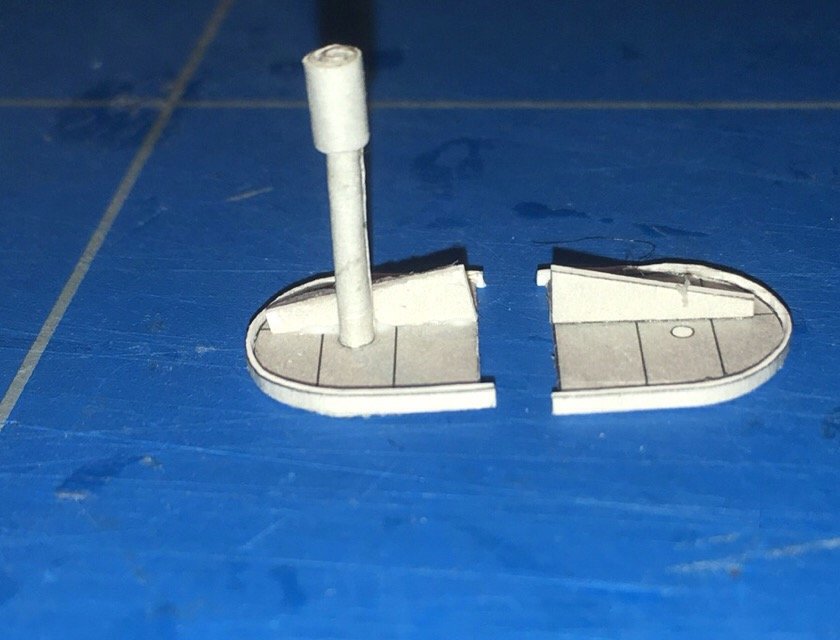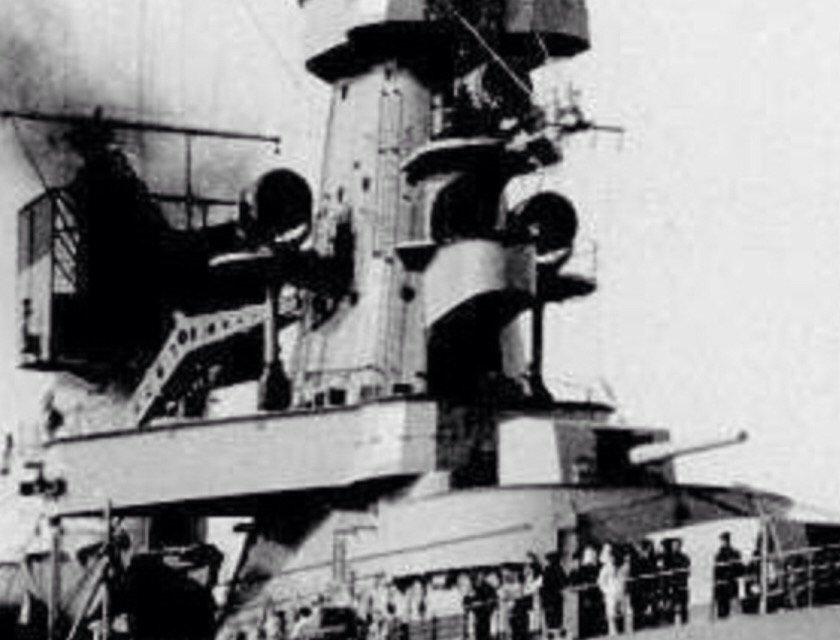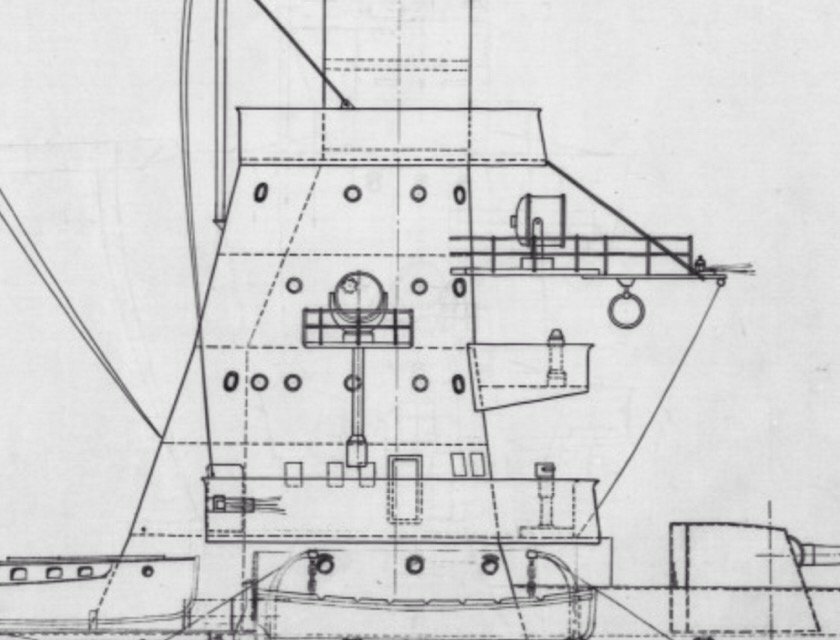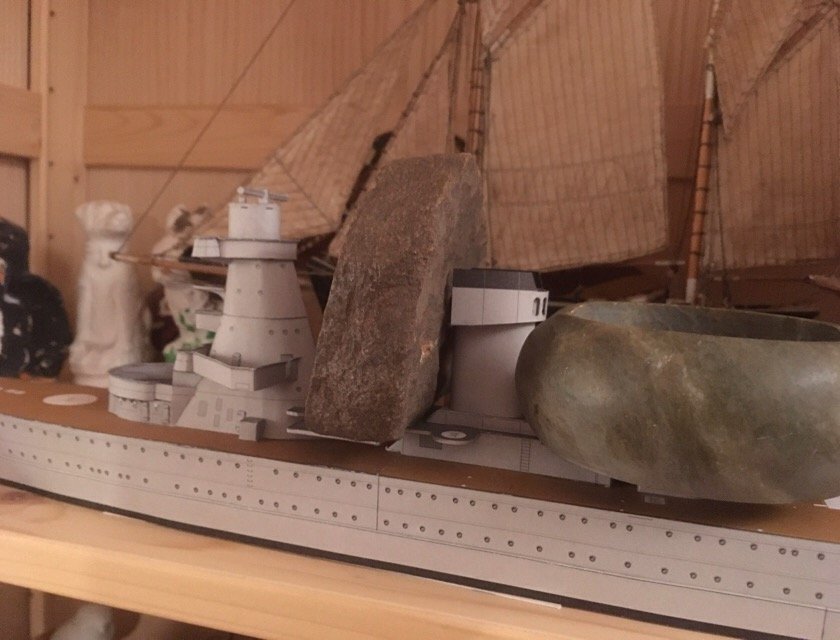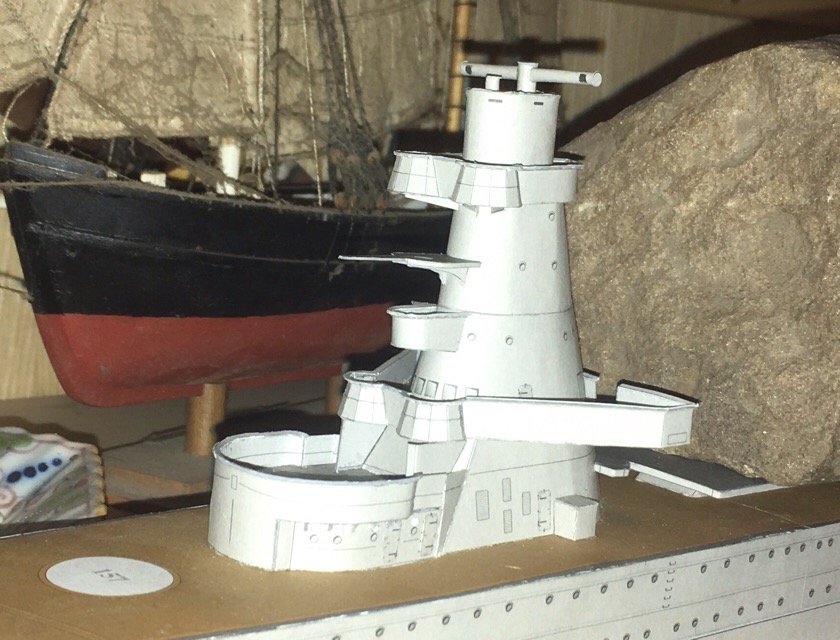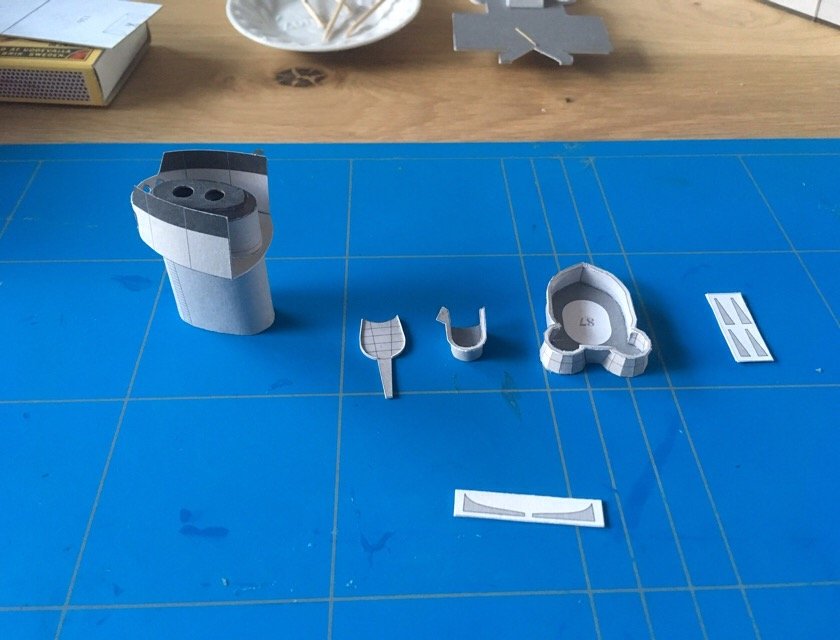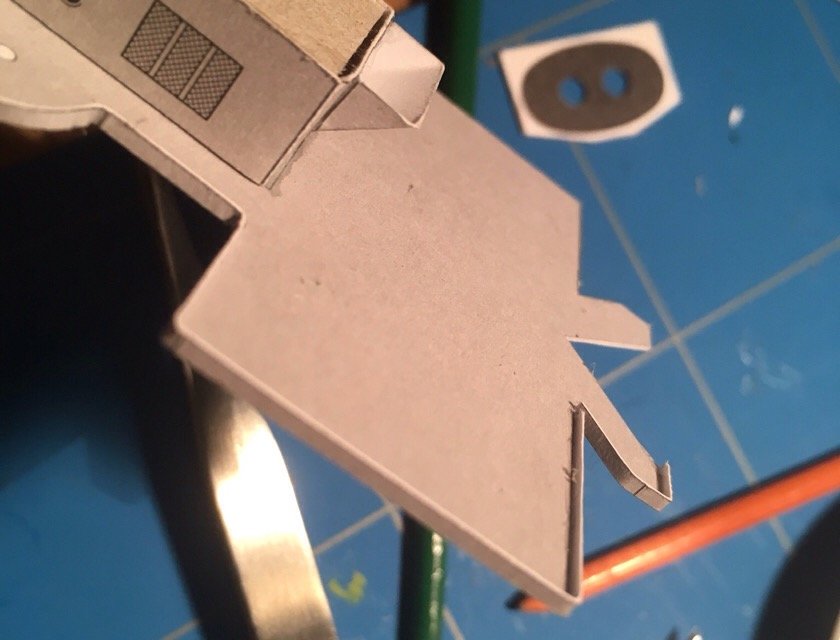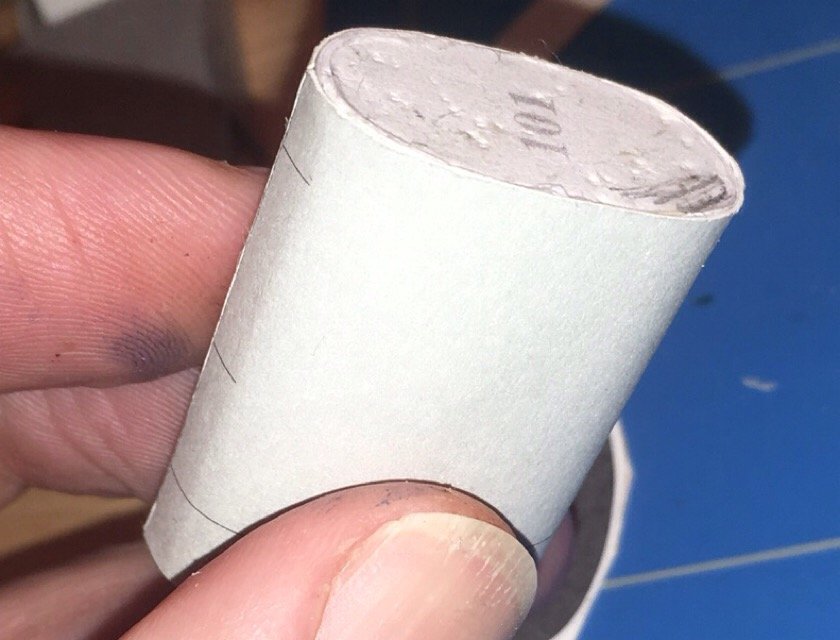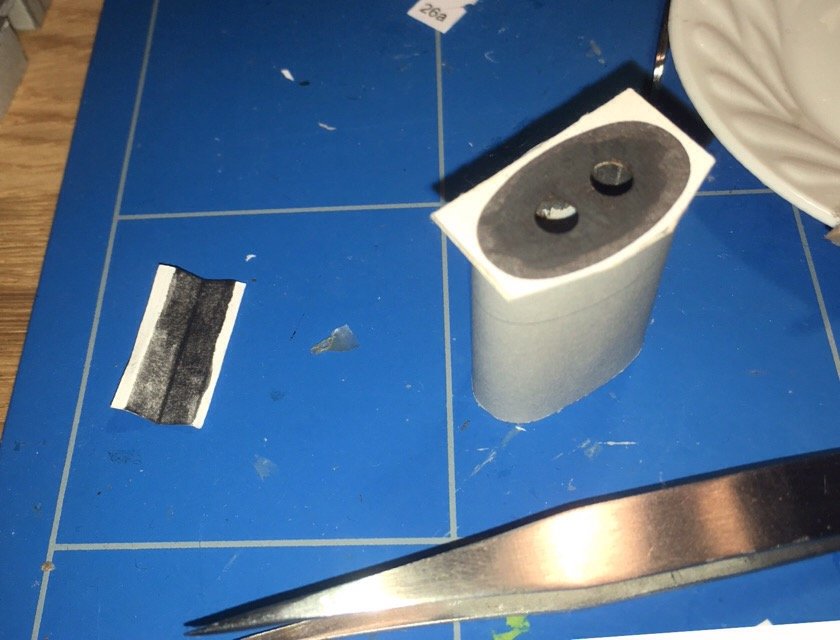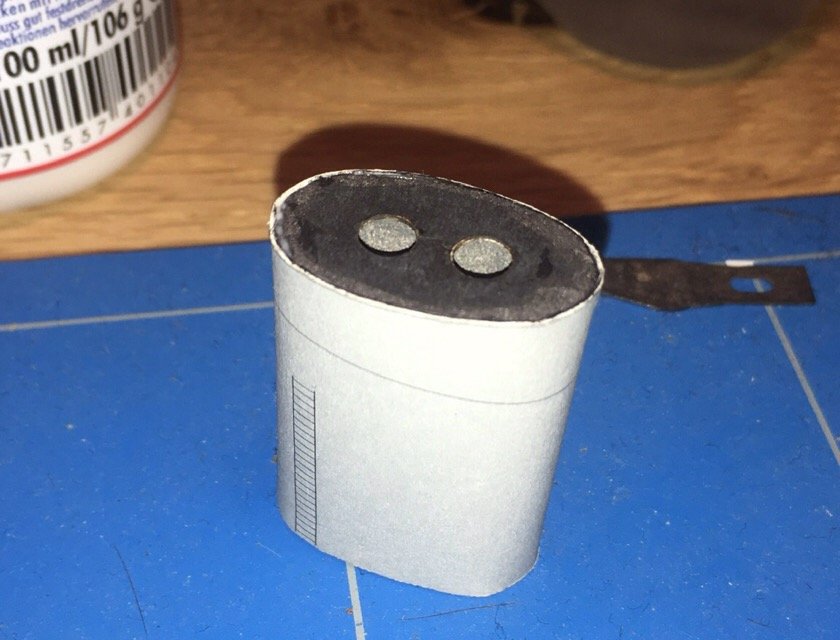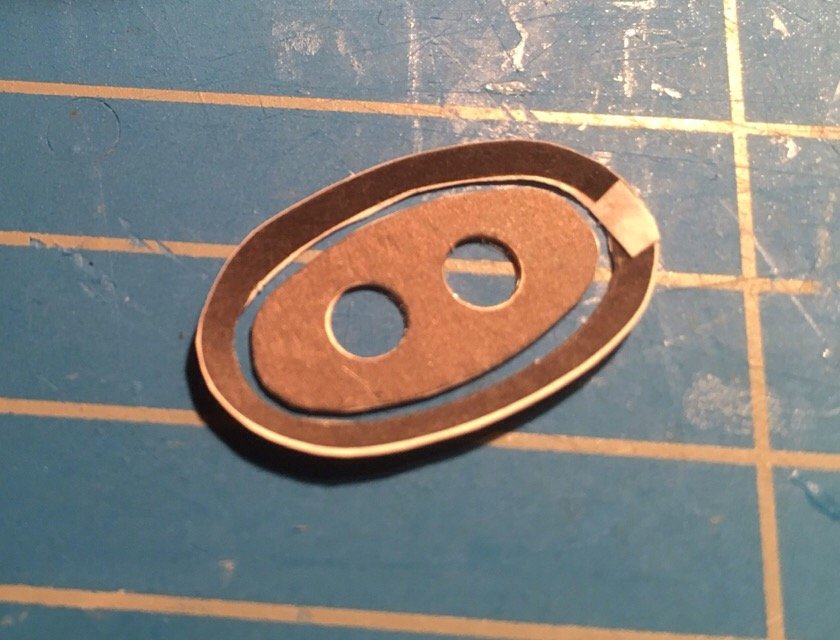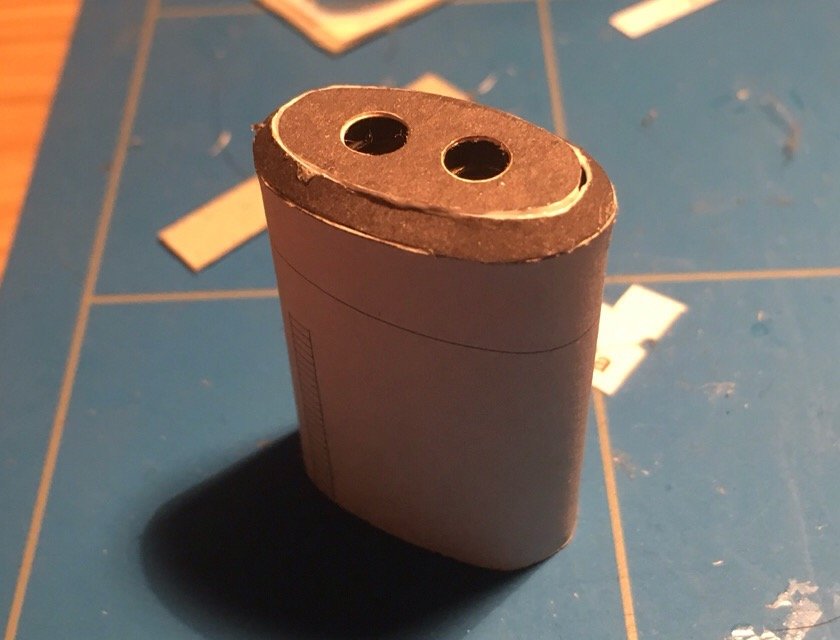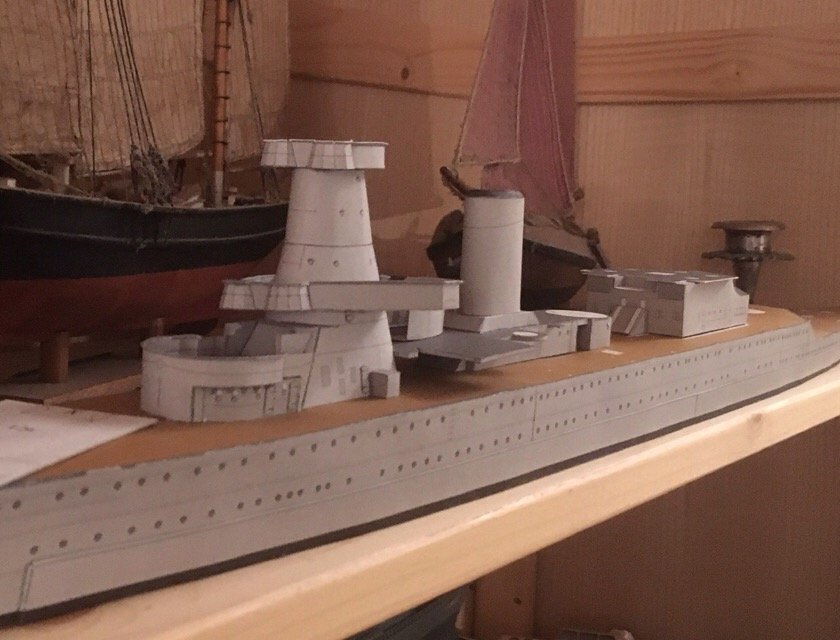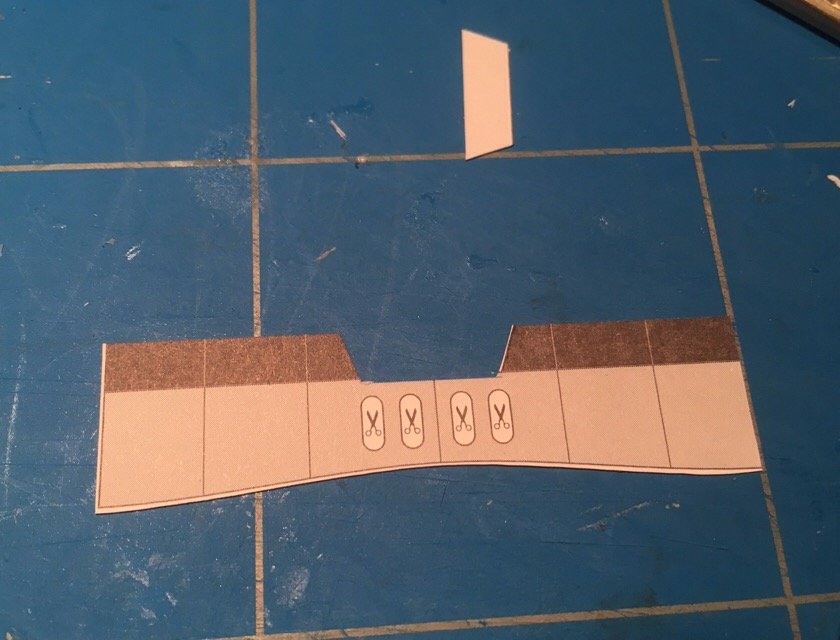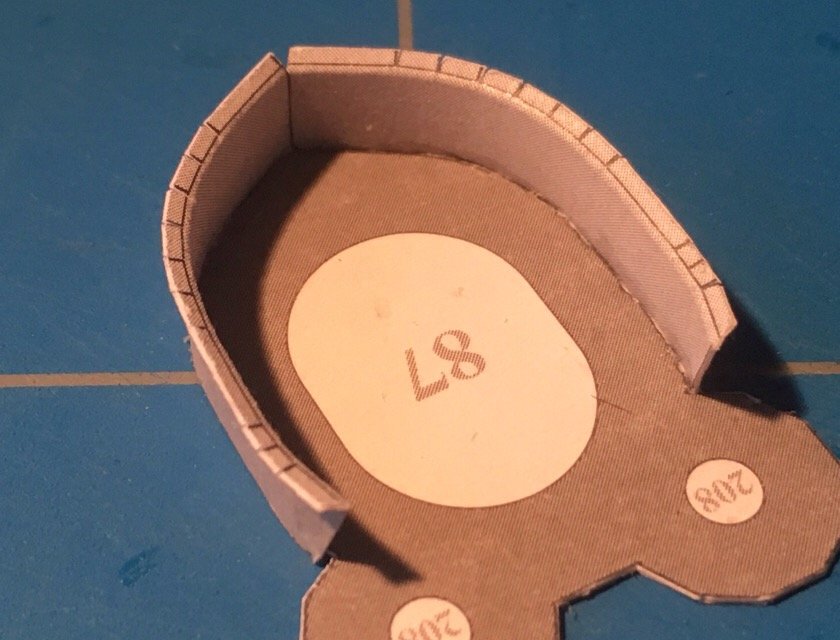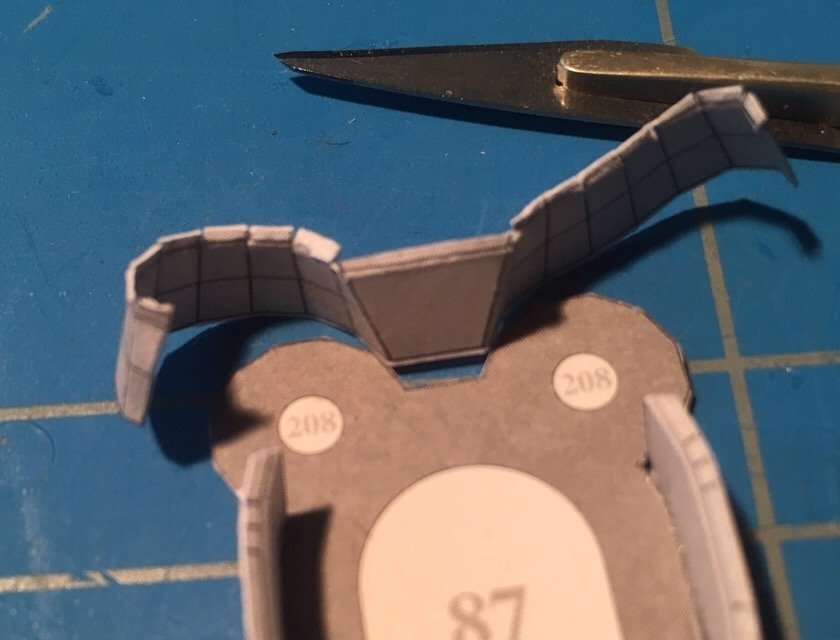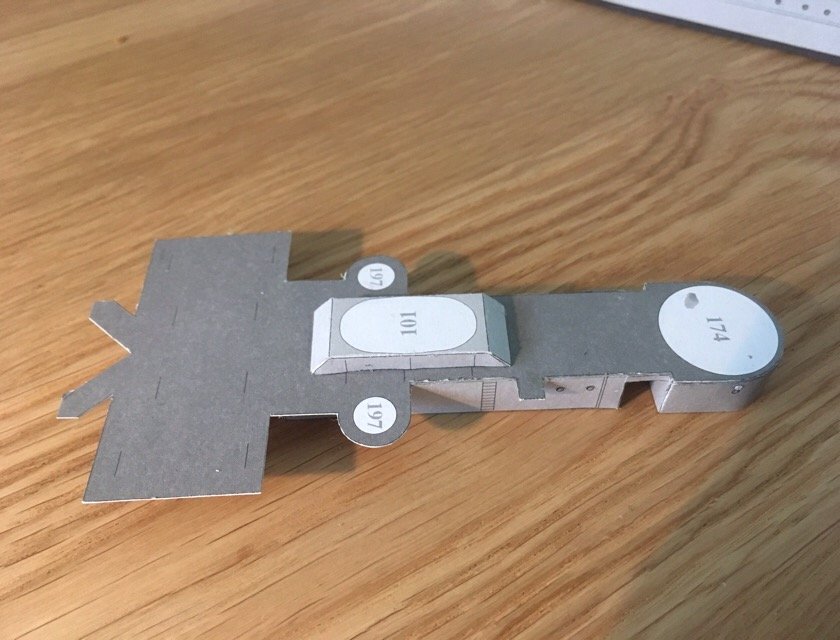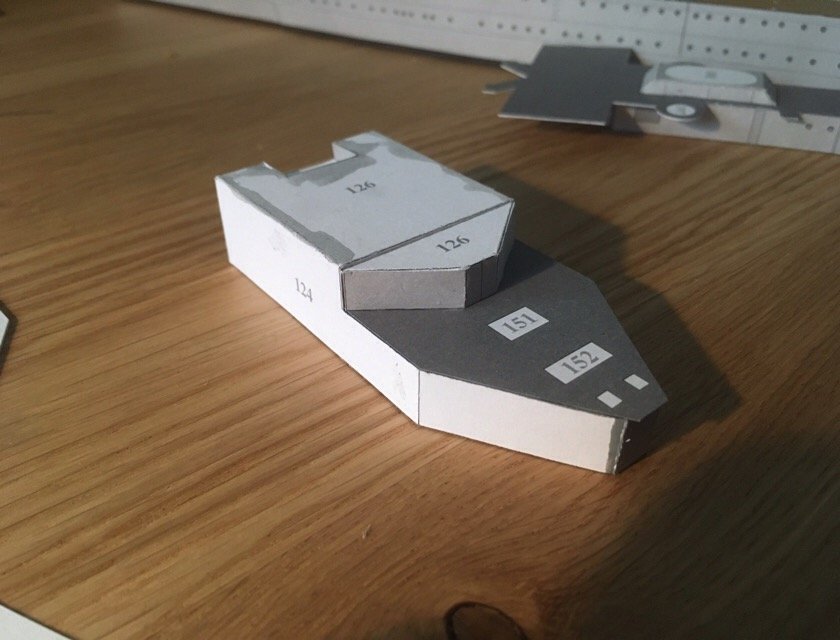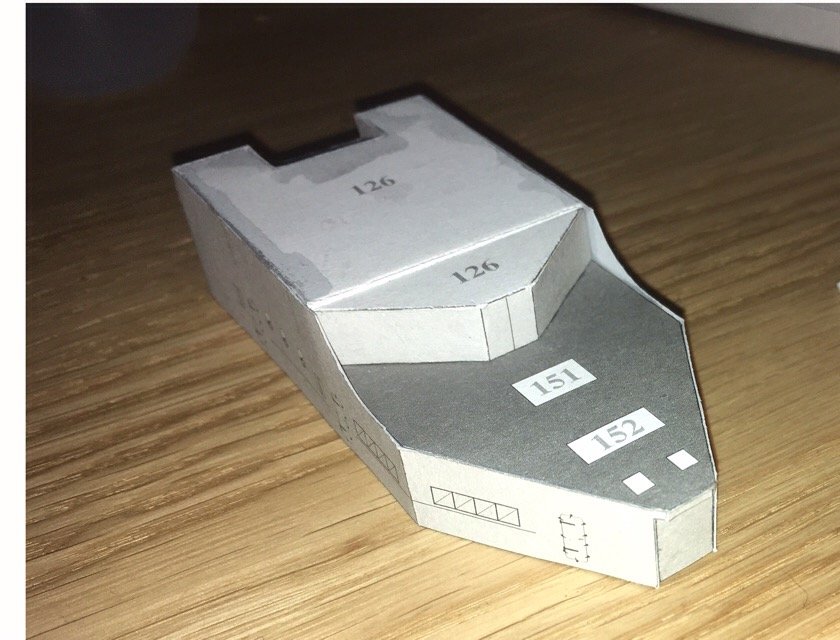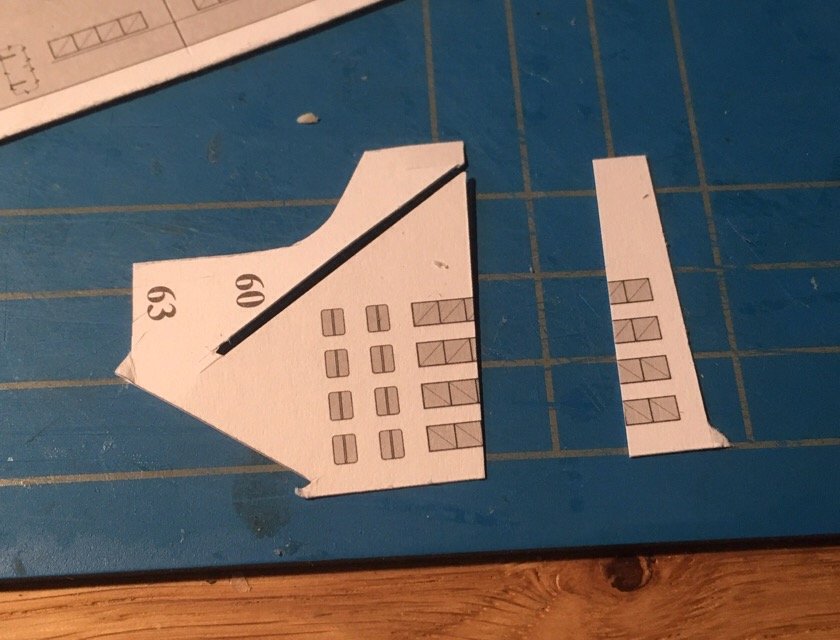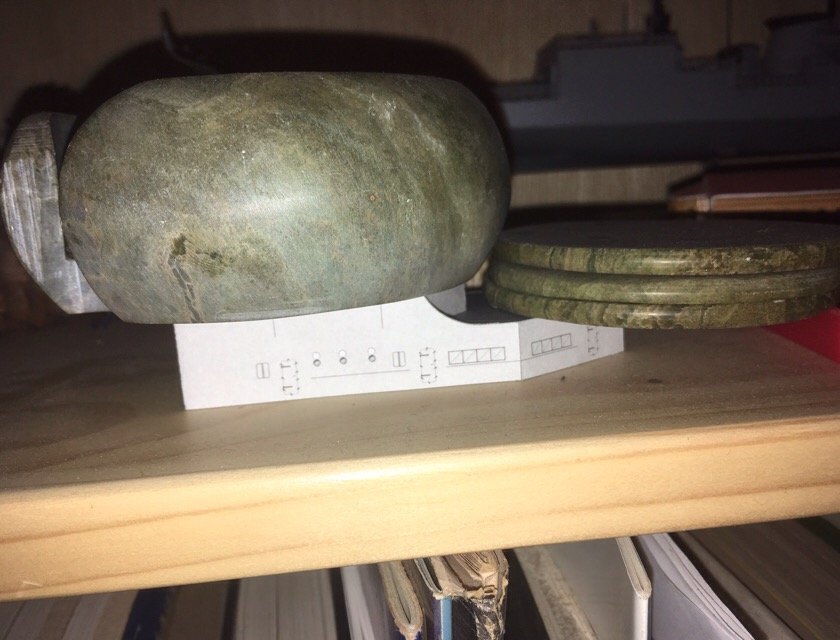-
Posts
3,534 -
Joined
-
Last visited
Content Type
Profiles
Forums
Gallery
Events
Everything posted by amateur
-
Using violence is usually not a good idea. using clamps is sometimes a much better idea. Second question: which parts do need pins while the glue dries? Most of the time, parts should hold their place without pinning them. Jan
-
That is not a bentinck shrould, that is a catharpin. a bentink is a real shrould going all the way down to eiter the deck, or the opposite railing. I vant find any decent pictures on the net, but I guess at this scale, just roved through the ring will do. i guess in real life they are attached by a eye-splice. But that is a mere, completely uneducated, guess. Jan
-
Hi Dan, that two-in-one strategy works out surprisingly well (so far: no idea how you are going to split-paint masts and flagpoles...) Jan
- 238 replies
-
- leviathan
- troop ship
-
(and 2 more)
Tagged with:
-
Yesterday I did the searchlight platforms (almost) After some considerations, and as suggested by a rather experienced cardboard builder on a german card-forum, I decided to do some surgery: first the inner column, and next the second layer on the bottom end. the column turned out slightly too thick, but acceptable. The second layer went OK, but I think the whole part is slightly too long. Some surgery needed on final fitting... Next I startedthe second platform. It was not untilthis picture that I discovered a small mistake: again some surgery is needed. Only question remaining: on which side ? Time will tell Jan
-
I keep telling myself "no this in't a 1:1 ship" I still don't believe myself Jan
- 2,215 replies
-
There is quite an interesting technique in the buildlog of Dafi’s Victory
-

Yamaha MT-01 by Dan Vadas - CARD - FINISHED
amateur replied to Dan Vadas's topic in Non-ship/categorised builds
Wow, I missed this one so far. You tab-gluing-speed is unbelievable Before long you will need more tabs and parts to fulfill your needs. There are some very, very demanding models around (not ships, but cars) These models for instance would keep you at least two weeks from the street: http://e63papermodel.altervista.org/download.html (only edge gluing, no tabs at all. They have some unbelievable detail) Jan -
Just to share a smaal discovery: those things are not pillars under the searchlights.... I was looking at some pics, and realised you can see 'through' the position where that pillar should be. So: there is none. then I checked the original drawing and realised whhat these are: these are the mechanism to turn the lights from the bridgedeck. How they turn the foreard light, I dont know. There is something on that little deck, but again: not a pillar. On this draing youcan also see that the forward windows of the bridge-deck are positioned too low in the kit: their underside should be level with the railing. (They are not....) Jan
-
All yesterday's tiny parts (and some more) fitted together on the conning tower the tower needs two additional platforms for the searchlightd (right and left side, 2where the two parts of the tower meet) with a massive column below to give it additional support) I also put the deckhouse in place, with some weight on it to get it dirmly stuck to the deck no time the coming days, so I guess this is all for this week Jan
-
I'll try. problem with reprimt is that my scanner/printer does completely change the dolour. Just rolling white paper, and painting afterward is perhaps the easiest way bto go. The funny thing is: even when you get the thing rolled to instructions, the resulting tube is just way too thick. I don't understand the designer: he should have been aware of paper thickness..... Jan
-
Little time today, so small parts. funnel was finished, and some small platforms around the conning tower are done (almost). tomorrows funpart: roll to make a column of max 2 milimietre wide at the top, and three and a half at the lower end. fun: the cardbord is almost .3 milimeters thick. suggestions are welcome. Jan
-
Tonight Idid some work on the funnel. the result is OK, but the designer of this kit, really should have double-checked his measurements..... Oh, and his instructions theinstruction was 'wrap around the deck' Ok, but the additional width, should that be below, above, or equally devided? I decided for 'below'. Hope I will not regrett in the future of the build. next came the funnel. Although rounded, there is no base-plate provided. No idea how the designer thinks you can either form or attach the thing. I used a copy I made of the deck on which it willbe attached as former. the top-side has holes in it, but I was not sure whether or not you can see the white inside of the funnel. I put a small black paper below the holes. (In the meantime I discovered that this was not necessary) On top of this comes a rim, with a second plate with two holes in it. This rim is way, waytoo large, itdoesn't even touch the funnel when laid on top, and the top-part is justnot fitting. Ineeded to shorten it by almost half a centimeter toget it fitting on the funnel. The fit with the topplate is a bit lousy, but some white glue and black paint will solve that issue. next will be a rather strange contraption around the funnel (added to increase draft of the funnel, as the machines couldn't get to full power) again you can see that the backside print is off by almost 1.5 milimeter in two directions. Again, some paint willbe needed. This part will be curved around a small deck, that willbe fited around the funnel (on the previous pic, you can see the downward sloping line that indicates the position of this deck. And now, just for fun, all parts loosely stacked together. I like the profile of the ship Jan
-
Having slightly wider channels is a better solution than having too little space for your shrouds..... So I wouldn't bother the width of the channels on Wasa, Mary Rose or any other ship, as long as it fits yours Jan
- 756 replies
-
- galleon
- golden hind
-
(and 2 more)
Tagged with:
-
The center of gravity might be an issue for those large ships from the 19th century, but lowering yards has been standard practice long before. almost all dutch paaintings from the period 1600-1700 already show this lowering of the top yards, even though these are so small that the center of gravity would not be an issue.Iguess that the easier and safer handling was more an issue for this practice. jacob Loef, around 1650. French ship, build in the netherlands. Jan
-
Silly me, although all your lifts, decks etc, show a waterline model, it wasn't until that last pic I realised that you are going to do a waterlinemodel I like these liners: straight lines, but very elegant. Nothing to do with these modern cattle-transport like cruiseships Jan
- 238 replies
-
- leviathan
- troop ship
-
(and 2 more)
Tagged with:
-
De Ruyter has been collecting some dust over the summer, but today I finally managed to soend some time on him. First I did the railing on the upper platform again, JSC did some overlength on a not so usefull place: The railing has to disassembled in three parts to get a reasonable fit. Now it is drying, for attaing the toprail needs to be done when the part is really drie (and therefore:rigid) Next was the middle deck house: I did the lower part some time ago, now I did the fullel-base. Whatever I did: the marks on the side wouldn't line up with those on the deck. Also the indent on the forward side of the deck was not large enough: the whole structure therfore stood to far aft. I made it larger, hoping there are no unexpected side-effects of the surgery:) Finally I started the aft deckhouse (the base for the anti-aircraft battery.) The idea is the same as for the other deckhouses: a white core, deck glued on top, walls glued around. Sounds simple, and it works reasonably well (apart for the top-layer of the card that tends to come loose at the edges.... Also, the back wall is a bit on the low side. Hopefully the gun-platform will hide the gap. And now it is drying under some pressure, as it tried to warp..... and finally, todays lesson: always check the back of your scrap card before using it as cutting mat Jan
-
Landstrom did great drawings. Without his book I was probably collecting stamps or something..... Jan
- 2,699 replies
-
- heller
- soleil royal
-
(and 9 more)
Tagged with:
-
I amgoing to put in the same thoughts I did in some other threads on kits. I understand thefun of building large models, but for many those kits are too large. (I still have Corels Prins Willem on my bench, and the next one has to be smaller too fit in my house) so: why not larger ships in smaller scales: makes them easier tobuild (less instead of more detail), and perhaps a larger group of interested customers. (besides: giving the current PE-technology, you can still put in lot of detail if you want) other thought: why not go for a different period: just an other around 1800 HMS might interestsome, but there is so much more. Why not turn to the sail/staem transition period: still wooden hulles, but definitiely something else. (Ithought of something like the Dutch zMS Bonaire, still in Den Helder) Third: why not turn to smaller ships: Corel had (has?) some mediterranean crafts, but around the German, Dutch, English waters there is quite a lot that is interesting enough to make a kit.... Jan
-
I hit the like on your request I will be a regular visitor over here, but as the ship is outside my knowledge-zone, I will not too often enter the discussion. Jan
- 238 replies
-
- leviathan
- troop ship
-
(and 2 more)
Tagged with:
-
When you know where to look, the stairs on the stern can also be seen on the pic of the hull upside down in drydock. (the one you posted on sept 21st) I guess that I don't tell you anything new by pointing out the pics in the German BundesArchiv? http://www.bild.bundesarchiv.de/cross-search/search/_1539258885/ Jan
About us
Modelshipworld - Advancing Ship Modeling through Research
SSL Secured
Your security is important for us so this Website is SSL-Secured
NRG Mailing Address
Nautical Research Guild
237 South Lincoln Street
Westmont IL, 60559-1917
Model Ship World ® and the MSW logo are Registered Trademarks, and belong to the Nautical Research Guild (United States Patent and Trademark Office: No. 6,929,264 & No. 6,929,274, registered Dec. 20, 2022)
Helpful Links
About the NRG
If you enjoy building ship models that are historically accurate as well as beautiful, then The Nautical Research Guild (NRG) is just right for you.
The Guild is a non-profit educational organization whose mission is to “Advance Ship Modeling Through Research”. We provide support to our members in their efforts to raise the quality of their model ships.
The Nautical Research Guild has published our world-renowned quarterly magazine, The Nautical Research Journal, since 1955. The pages of the Journal are full of articles by accomplished ship modelers who show you how they create those exquisite details on their models, and by maritime historians who show you the correct details to build. The Journal is available in both print and digital editions. Go to the NRG web site (www.thenrg.org) to download a complimentary digital copy of the Journal. The NRG also publishes plan sets, books and compilations of back issues of the Journal and the former Ships in Scale and Model Ship Builder magazines.



